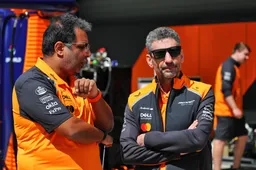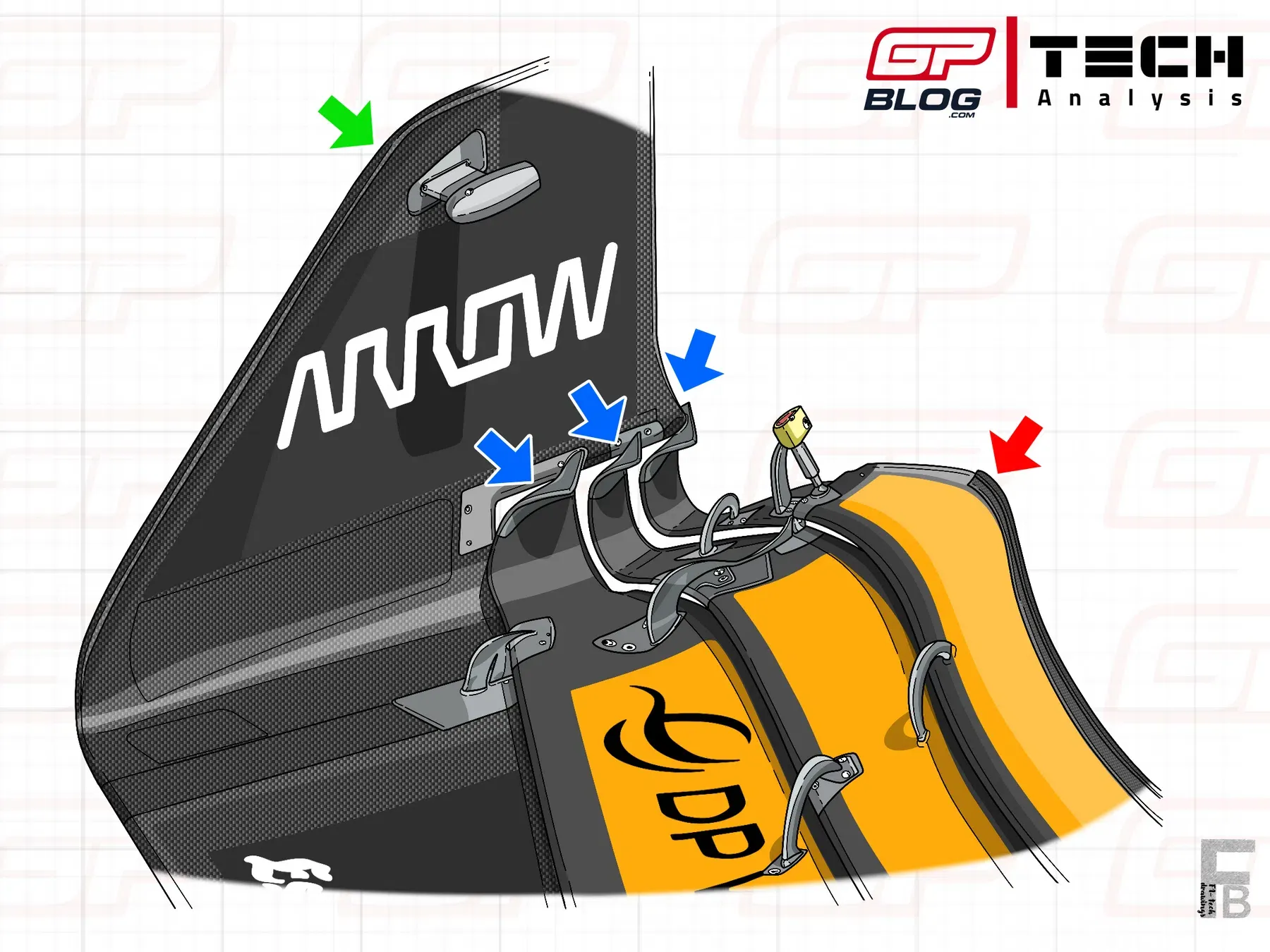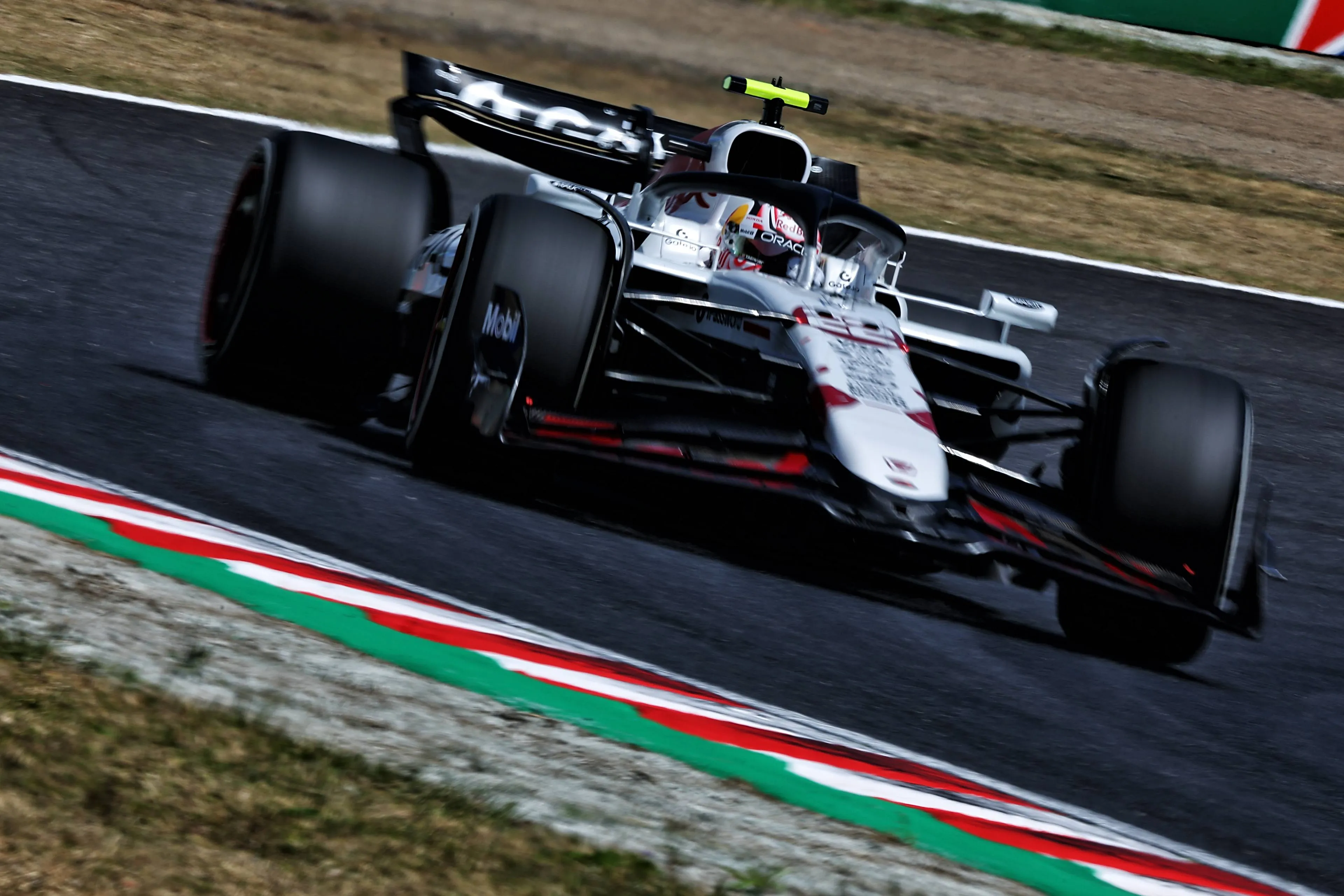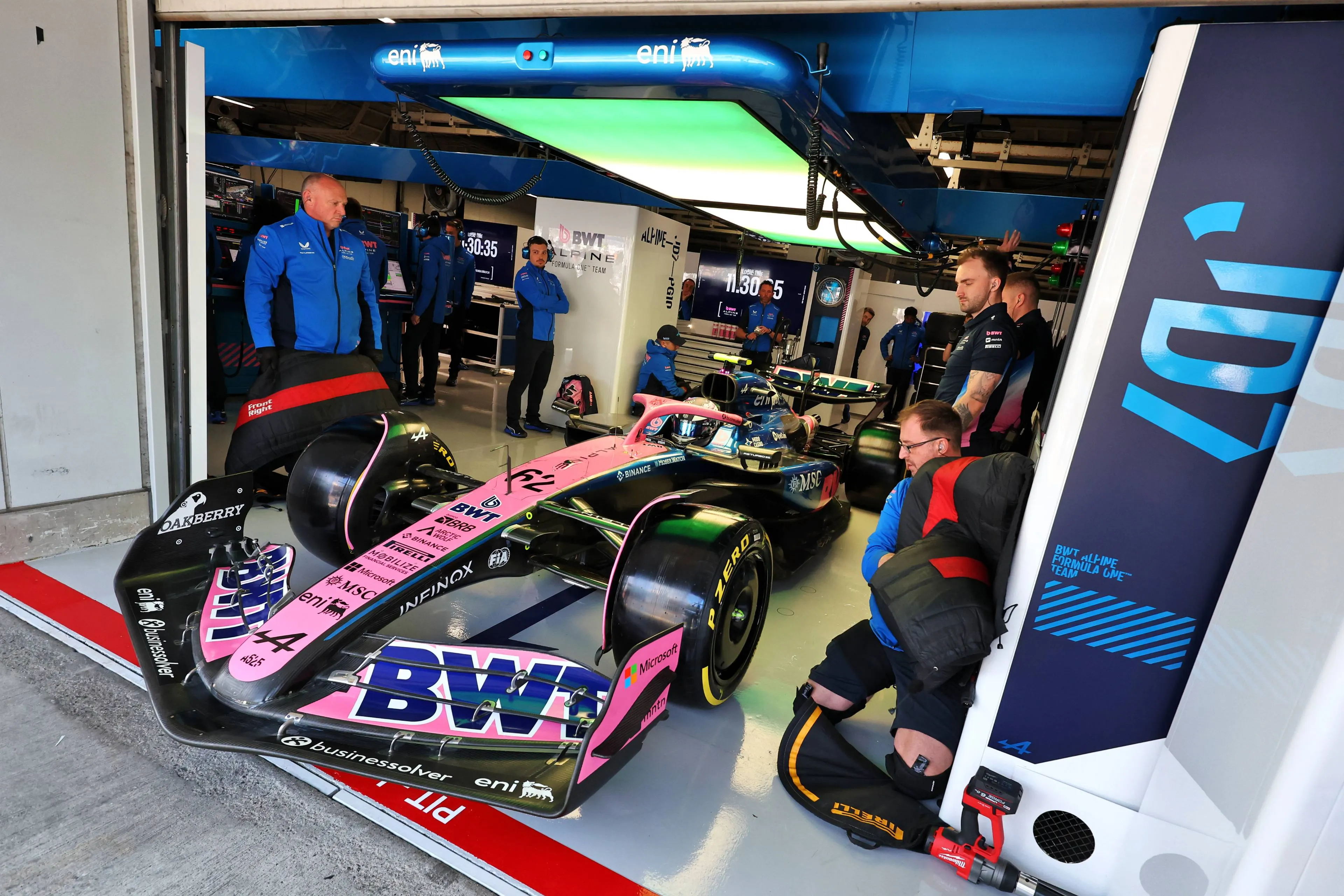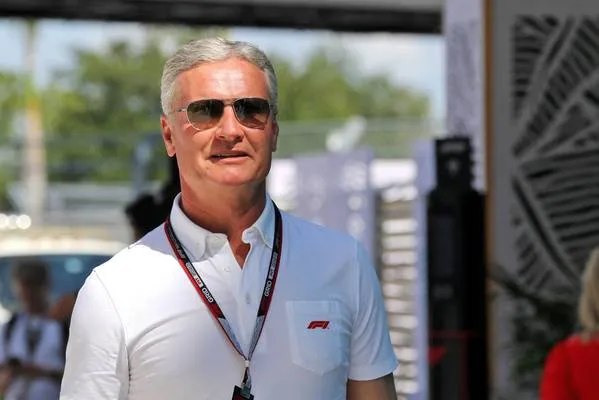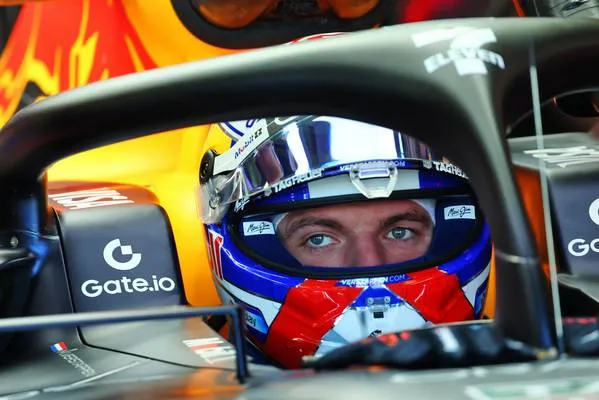Tech Analysis | Why the MCL38 was on equal terms with the RB20 in Austria
After a very tight weekend last time out in Barcelona, the Austrian Grand Prix offered another exciting and wheel-to-wheel battle between Norris and Verstappen. The race was eventually won by Mercedes’ George Russell, but the weekend offered much food for thought on the performance of the two teams’ cars, as their strengths and weaknesses emerged. Here’s our view of the situation.
Red Bull with an "easier" weekend than usual
Starting with Red Bull, the team seemed to have come back to their “normal” form after a series of difficult weekends, where they struggled to extract the maximum performance from the RB20.
In Spain, they brought quite a big upgrade package that featured a new sidepod and a different vertical cooling inlet. As shown in the drawing below, the new sidepod featured a massive excavation in the lower part, with a greater distance from the upper part of the floor compared to the previous version (white arrow) and with a lower height of the side itself (yellow arrow). In addition, the tray placed above the "shark inlet" (the horizontal cooling inlet) had also been modified, and now featured a small curl in its terminal part (red arrow), to generate a small vortex that avoids aerodynamic stagnation along the side wall. As a consequence of these changes, the new version of the sidepod featured a much larger undercut (green arrow), with the aim of increasing the flow of air directed towards the beam wing and the diffuser.

As for the cooling inlets, two substantial changes can be spotted in the drawing below: the first concerns the connection of the sidepod with the horizontal inlet, which now has a wider "slide" useful for bringing air towards the upper part of the floor and feeding the channel directed towards the rear of the car (orange arrow). The second change concerns the vertical inlet, which no longer has a constant width for its entire height as in the previous version, but now has a reduced width for about two thirds of its height, to then widen in the upper portion (blue arrows).

These changes aimed to improve the RB20's efficiency by reducing the surfaces exposed to the air and thus generating less drag.
However, during the Spanish Grand Prix weekend, the team struggled to make these updates work as expected, as the mechanics made tons of changes, especially on the mechanical side, to improve the car’s behaviour on kerbs and at high speed.
Despite only one free practice hour was available during the Austrian Grand Prix weekend, the Milton Keynes team managed to find a good balance straight away: since FP1, in fact, the RB20 seemed on rails in the medium and high-speed corners of the track (especially turn 7-8 and 9-10), proof that the engineers set the car very low to the ground and also very stiff at the same time to extract as much downforce as possible from the bodywork, without ignoring the RB20’s top speed, as it was one of the quickest at the end of the straights, thus making the upgrade package work as expected.
This perfect mechanical set-up reduced to the minimum the vibrations generated by the soft tyres over the single lap, allowing Verstappen to destroy everyone during Saturday’s qualifying.
However, the very stiff set-up took its toll on Sunday’s race: in a very similar way as what happened in Imola this year, the mechanical set-up, together with Verstappen’s ability to babysit the tyres on the high fuel, saw the Dutch champion open an 8 second gap during the first stint on the medium tyres. Since both he and Norris switched to the hard tyres, the pace was almost matched, with Verstappen often complaining about the tyres not being “consistent” throughout the stint.
The situation drastically changed when they both switched to the medium tyres, with less fuel load, for the last stint of the race: the set-up didn’t allow the RB20 to make the tyres work as good as the MCL38 did, having a slower pace in the end.
The accident between Norris and Verstappen didn't give us the chance to see if, in the event of an overtaking, he would have been able to pull away from the Red Bull or not.
The impression is that Red Bull doesn’t have a big advantage over the competitors as seen in the first few races of the year, for a very crucial reason: the “correlation problems” between the simulations and the track mean that the RB20 has a less than ideal set-up from FP1 onwards, with engineers that are forced to make countless set-up changes (especially on the mechanical side) to find a balance that allows them to keep the aerodynamic platform stable through the fast corners and be able to attack the kerbs and the slower chicanes, as happened in Barcelona. The main consequence of this problem is that it becomes difficult to develop the car, because the team might see big gains in the wind tunnel or in simulations, which then don't translate into reality.
Another big upgrade package is expected for Silverstone, which could really be a watershed for the current F1 season: if the engineering team led by Pierre Wachè will be able to make it work as expected straight away, then we could come back at seeing some dominant races (on specific circuits) as happened at the beginning of the year, while if rushes to find the right set-up during free practices continue, then there’ll be a concrete chance for McLaren to challenge Red Bull at least in the Constructors’ Championship.
A competitve McLaren also on a "difficult" circuit
Moving now to McLaren, the Woking team had a very positive weekend once again, as they’d have gained many precious points both on Ferrari and on Red Bull if the crash for the lead hadn’t occurred.
As Andrea Stella pointed out after Canada, the team would have focused on bringing small upgrades race after race rather than bringing big upgrade packages as they did during last year and the first half of this Championship.
And that’s exactly what happened in Austria, as a completely new front wing appeared on the MCL38 since Friday’s FP1. The new solution was characterized by a series of changes to the top flap and the endplate. As for the last flap, it has a slightly different design compared to the latest version introduced in Miami: as you can see in the drawing below, it has a more curvilinear profile in the outermost portion (red arrow), pushing the air inside the front wheels and increasing the flow of air directed towards the bodywork and the Venturi channels.
Furthermore, a crucial change concerns the transition area from the flaps to the endplate: as highlighted by the blue arrows, the metal supports that connect the second/third and fourth flap to the endplate have an innovative and very "angular" design, in order to generate a vortex useful for interacting with the front tyre wake generated by the contact patch and push this negative turbulence outwards.
Finally, another change concerns the shape of the endplate itself, which now has a more curvilinear and less squared shape compared to the previous version (green arrow), to reduce the weight of the front wing itself.

All these changes had the main goal of improving the car's behaviour, especially at the slow-speed, as underlined by Andrea Stella himself during the usual Friday interview: “The aim is to maintain the direction of development that we introduced with the front wing that we brought to Miami. We saw that the concept works well. So we wanted to continue in this direction too, and this is another attempt to improve, I would say, in particular, the behaviour of the car at low speed. [...] We hope that the compromise we are working on will be able to offer some advantage at low speed, but without affecting high speed or straight line too negatively.”
The new front wing clearly worked as expected, but the MCL38 seemed less brilliant than usual during Saturday’s qualifying, and there’s an explanation to it: since the beginning of the season, in fact, McLaren has struggled to keep the rear tyres temperatures under control on rear limited circuits and with the softest compound (C5) in qualifying, as the soft tyre vibrations over the single lap made it overheat too much (especially on the rear axle) producing a loss of grip. That’s exactly what happened during Saturday’s qualifying, when the high asphalt temperatures, together with the C5 use and the rear limited nature of the circuit, increased the gap between the MCL38 and the RB20.
Despite this aspect, the MCL38 still seems very good at tyre management during the race, regardless of the track layout or the conditions: thanks to its ability to generate a lot of downforce from the Venturi channels and bodywork, the car really makes the tyres last longer than the RB20, being quicker at the end of different stints and especially on lower fuel loads.
This peculiarity gave Norris the chance to fight Verstappen in the last stint, but also allowed Piastri to make a fantastic comeback from P7, with a strong tyre management that secured him the podium at the end of the race.
What to expect from Silverstone?
This subtle balance in the performance of the two cars makes any prediction for Silverstone impossible: the English circuit is well known for requiring a very efficient car and for being very tough on the front axle due to the sequence of fast corners, as Pirelli is expected to bring the hardest compounds of the range for next week’s race.
The layout of the track will suit both the RB20 and the MCL38. Red Bull’s car could be slightly advantaged as McLaren’s latest upgrades to improve their car's slow speed. Despite this, the hard compounds and the low temperatures could play a crucial role in the weekend’s evolution, as they’ll reduce the tyre wear, making it easier to babysit the tyres during the race. As seen in the last couple of races, a lot will depend on both teams’ ability to read the race and the different situations, as every detail will make the difference for the final result.
In conclusion, after a very exciting weekend of racing, where Red Bull and McLaren were equalled on performance, another great weekend of racing is about to start and it’s impossible to predict who’ll come out first on Sunday's race.
Popular on GPBlog
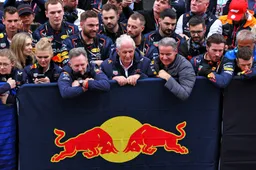
Horner informs that Red Bull were using reserve pit crew for the Japanese Grand Prix
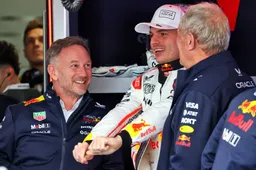
Horner says McLaren have "made a bed" with their driver lineup after Verstappen's Suzuka victory
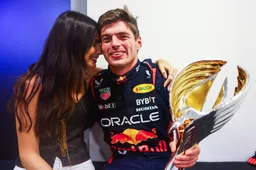
Kelly Piquet reacts with pride to Verstappen's first victory in 2025
